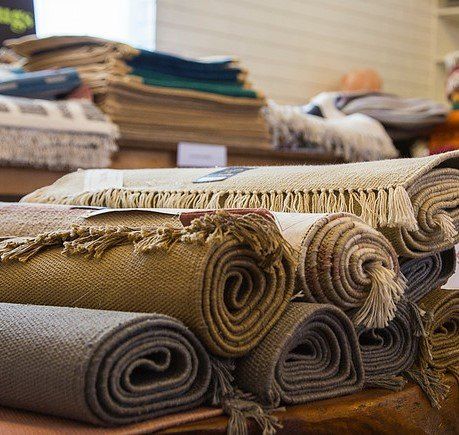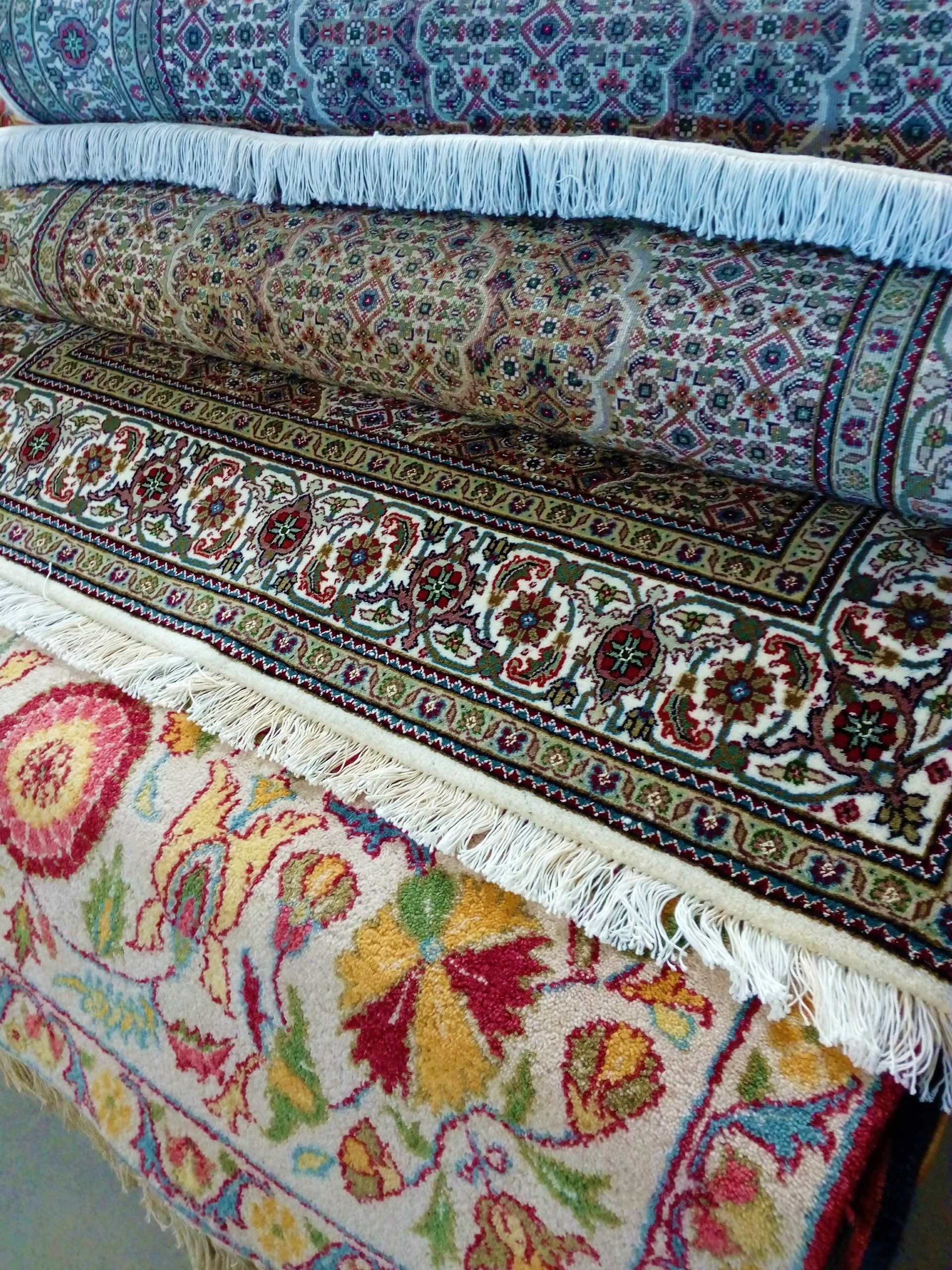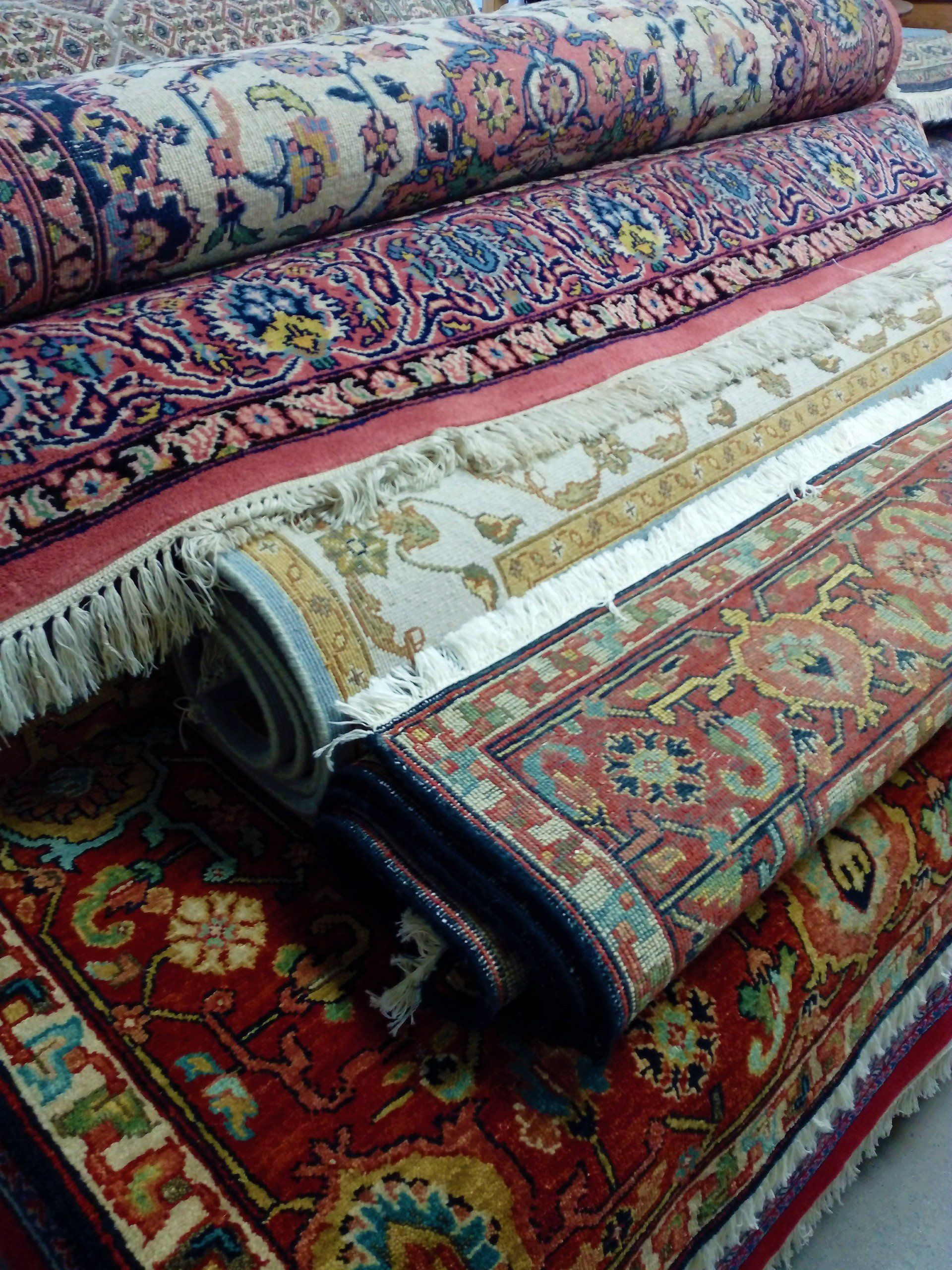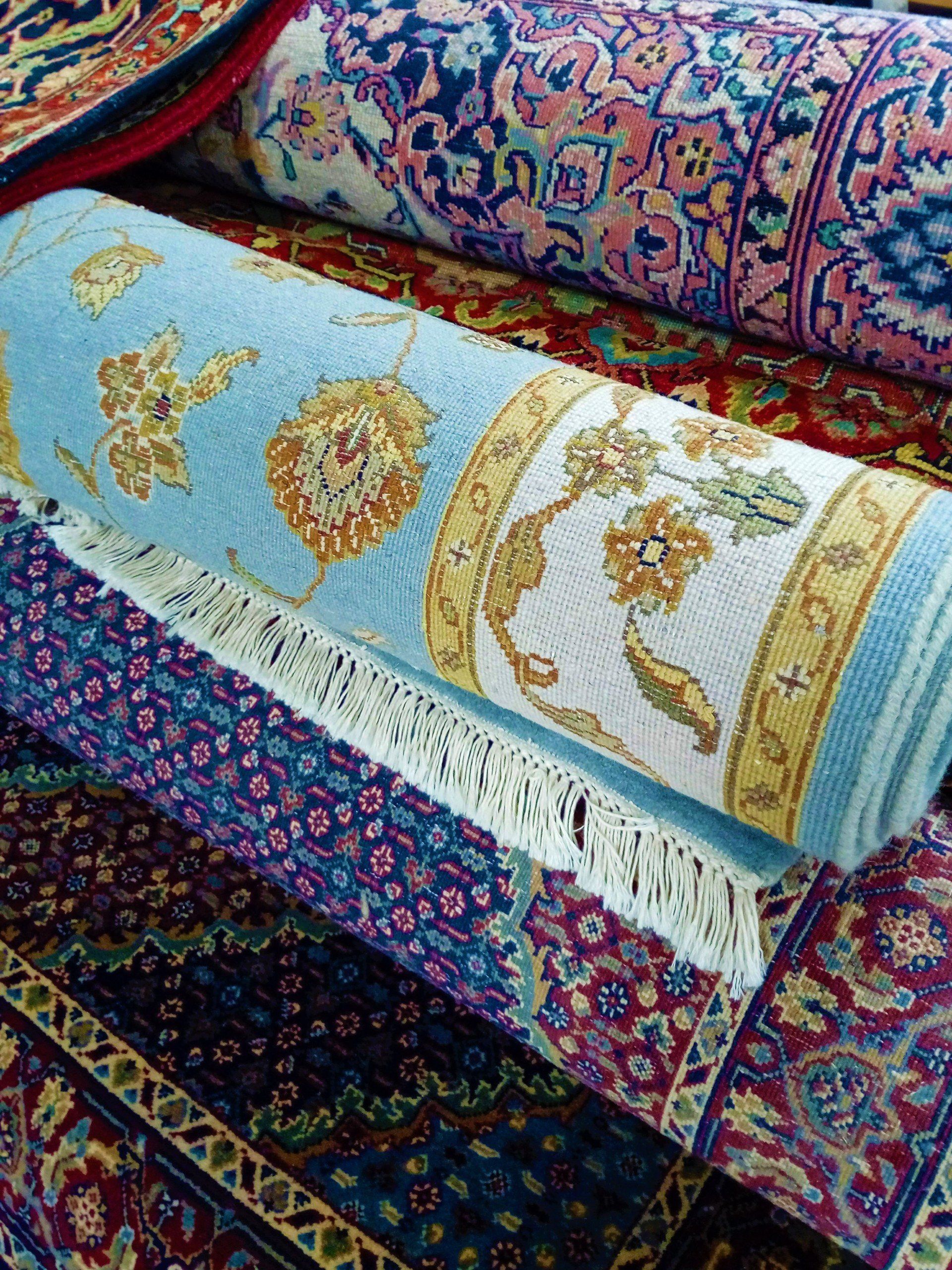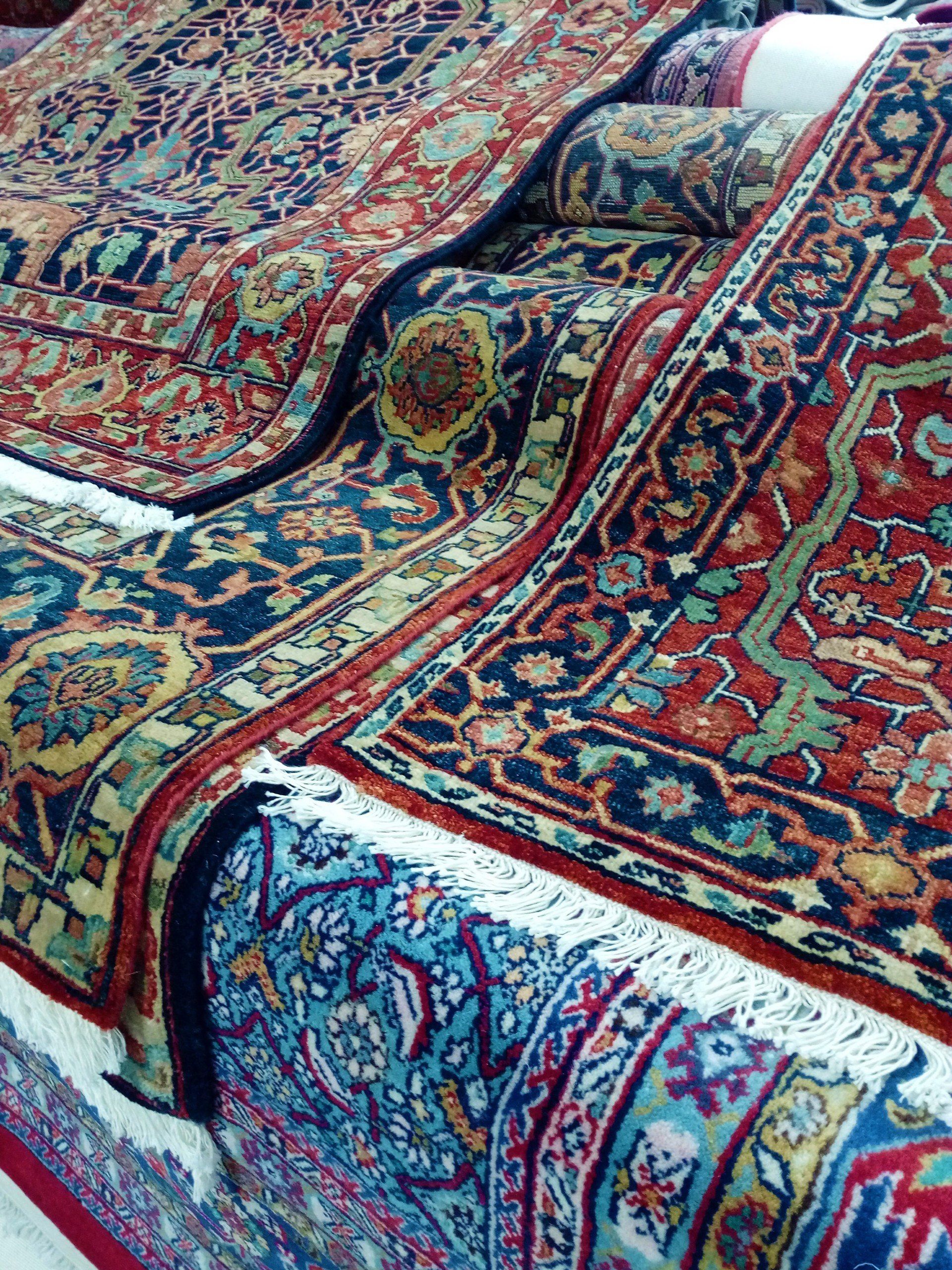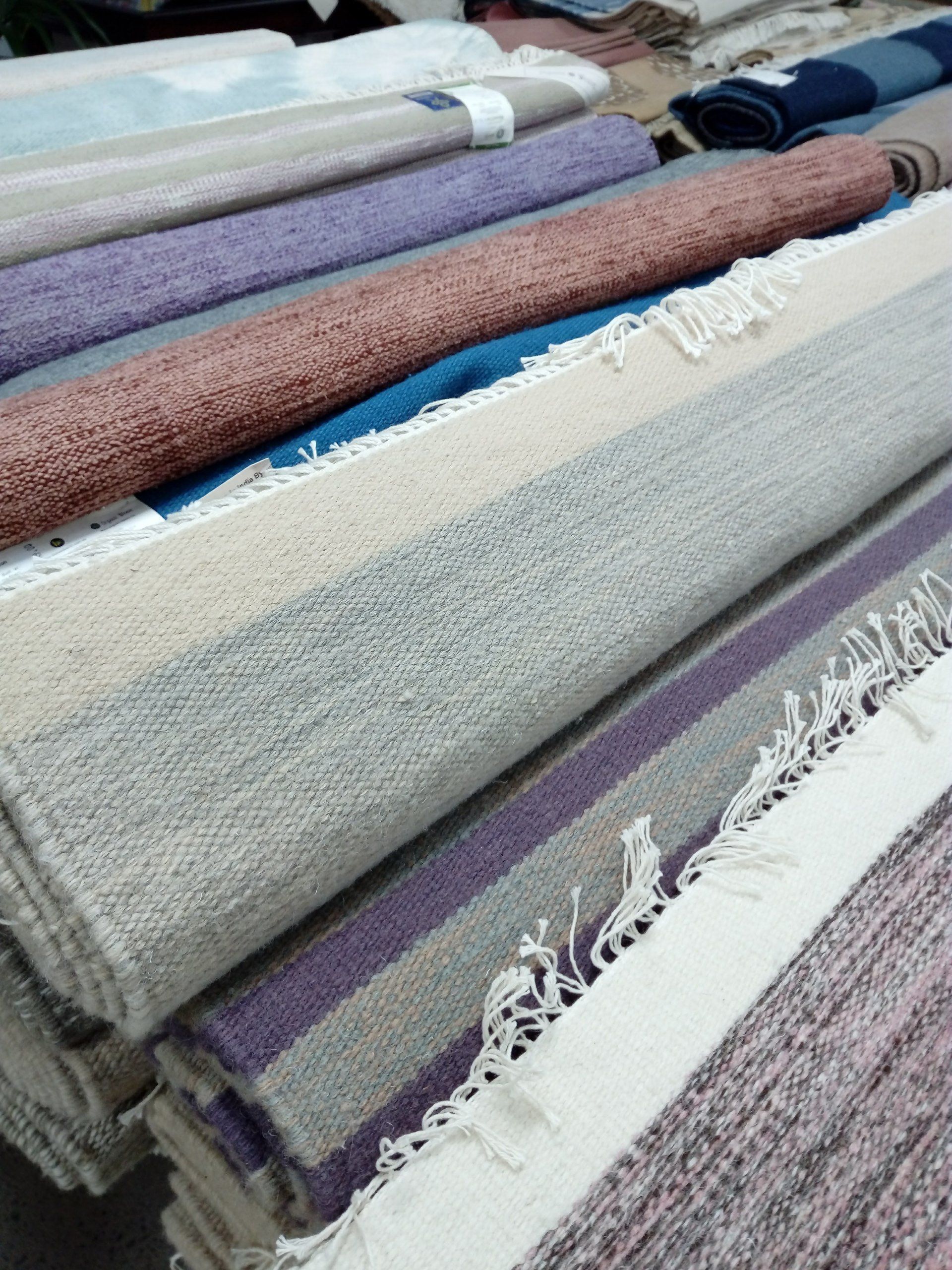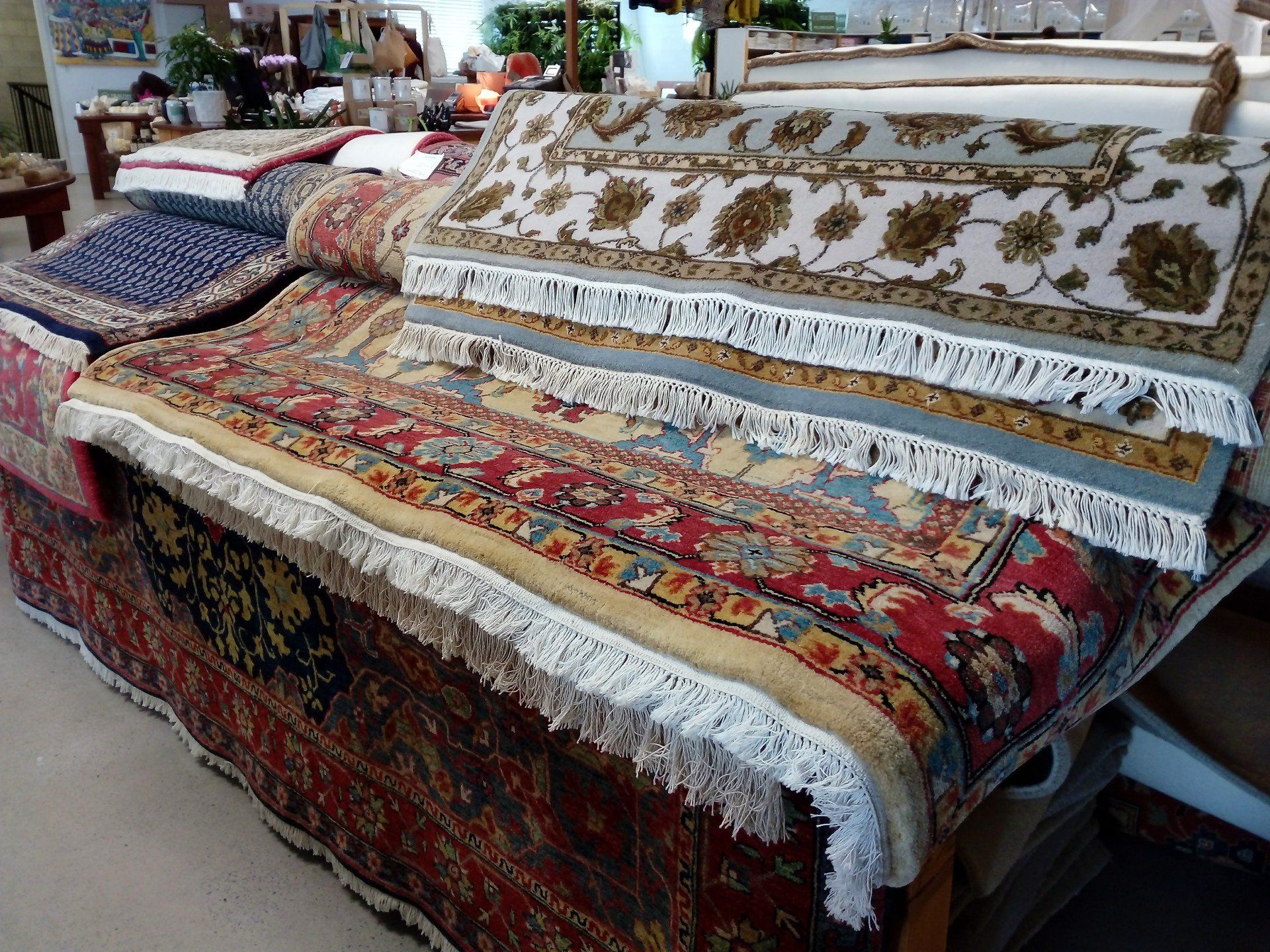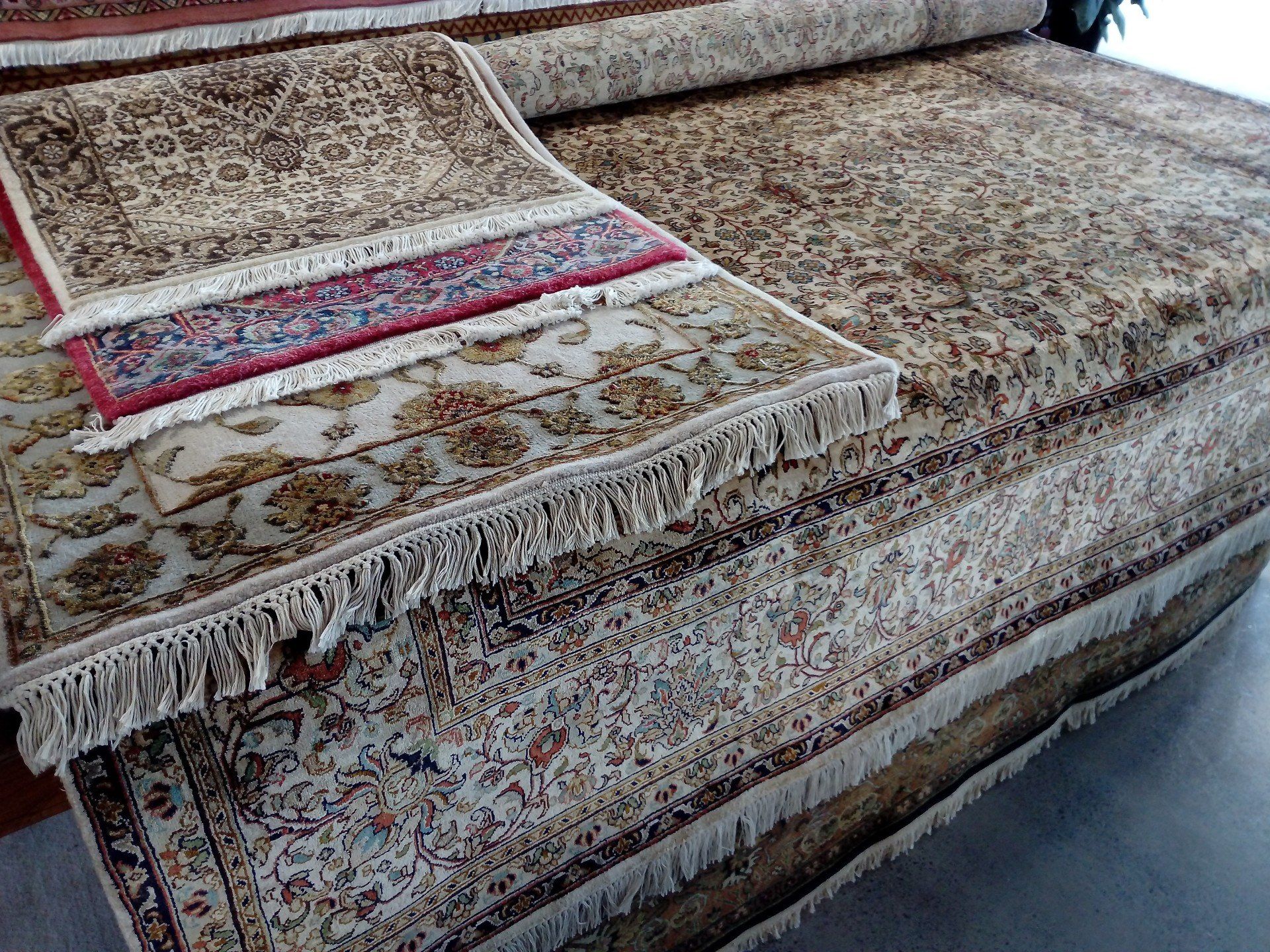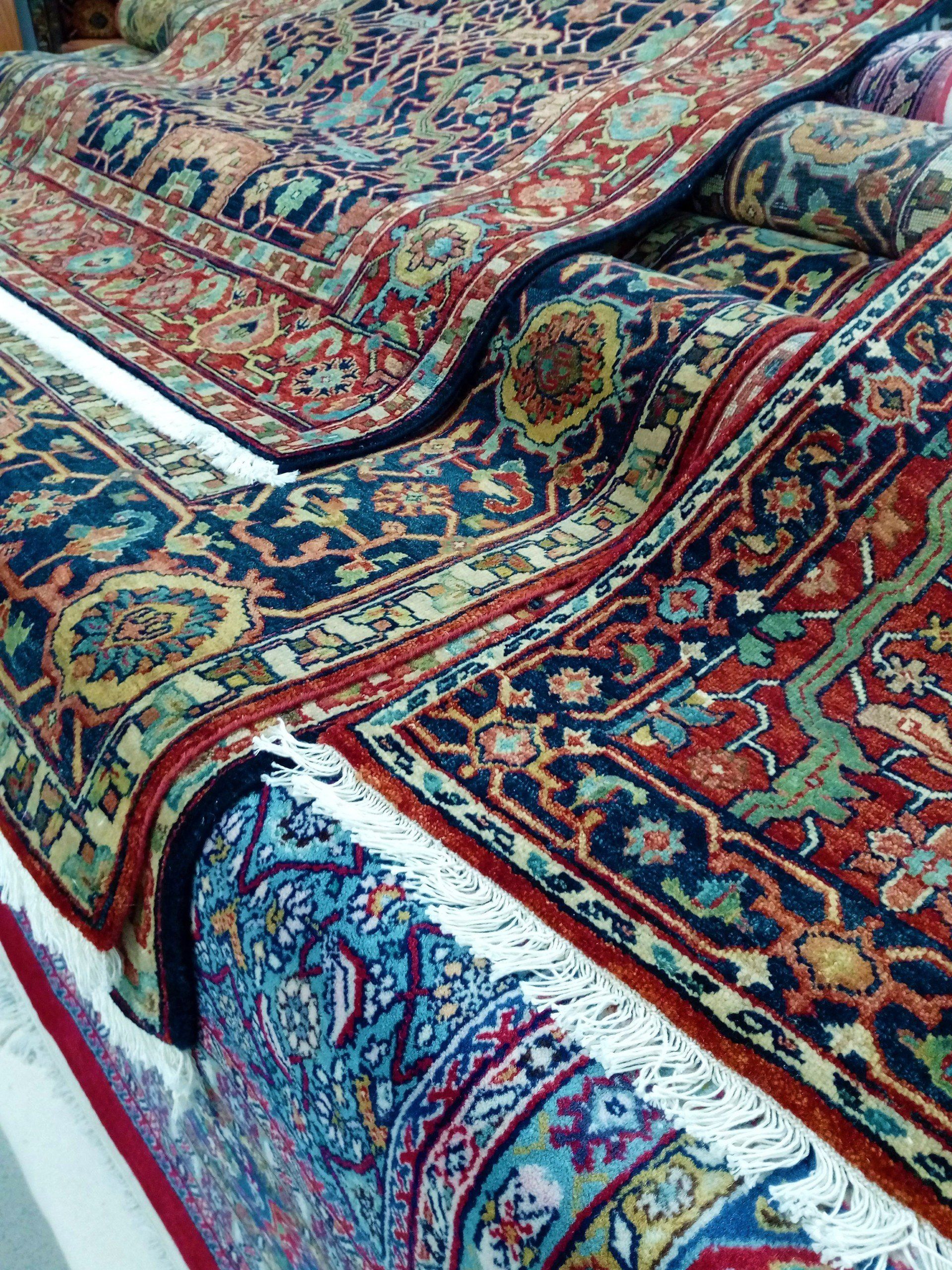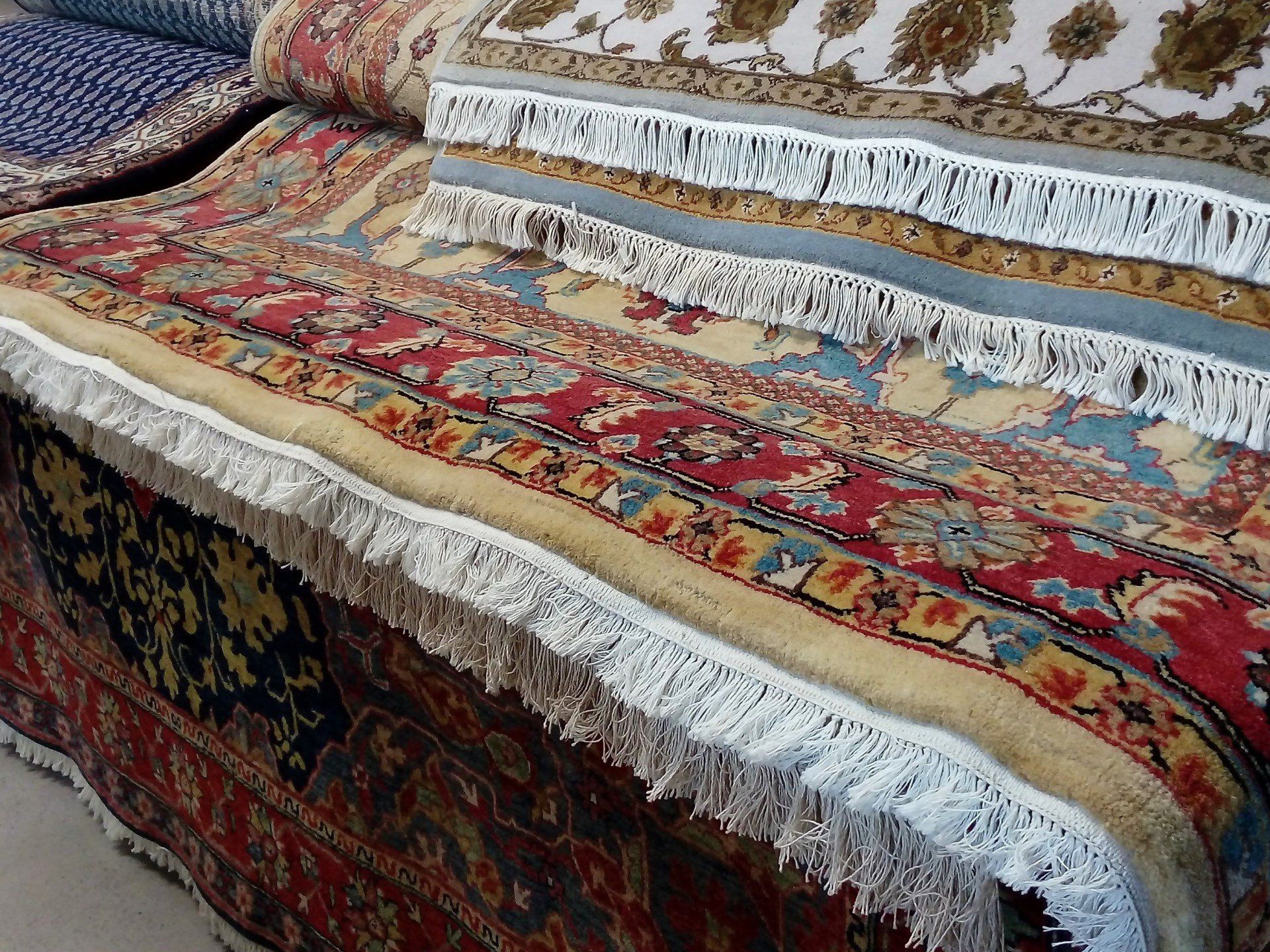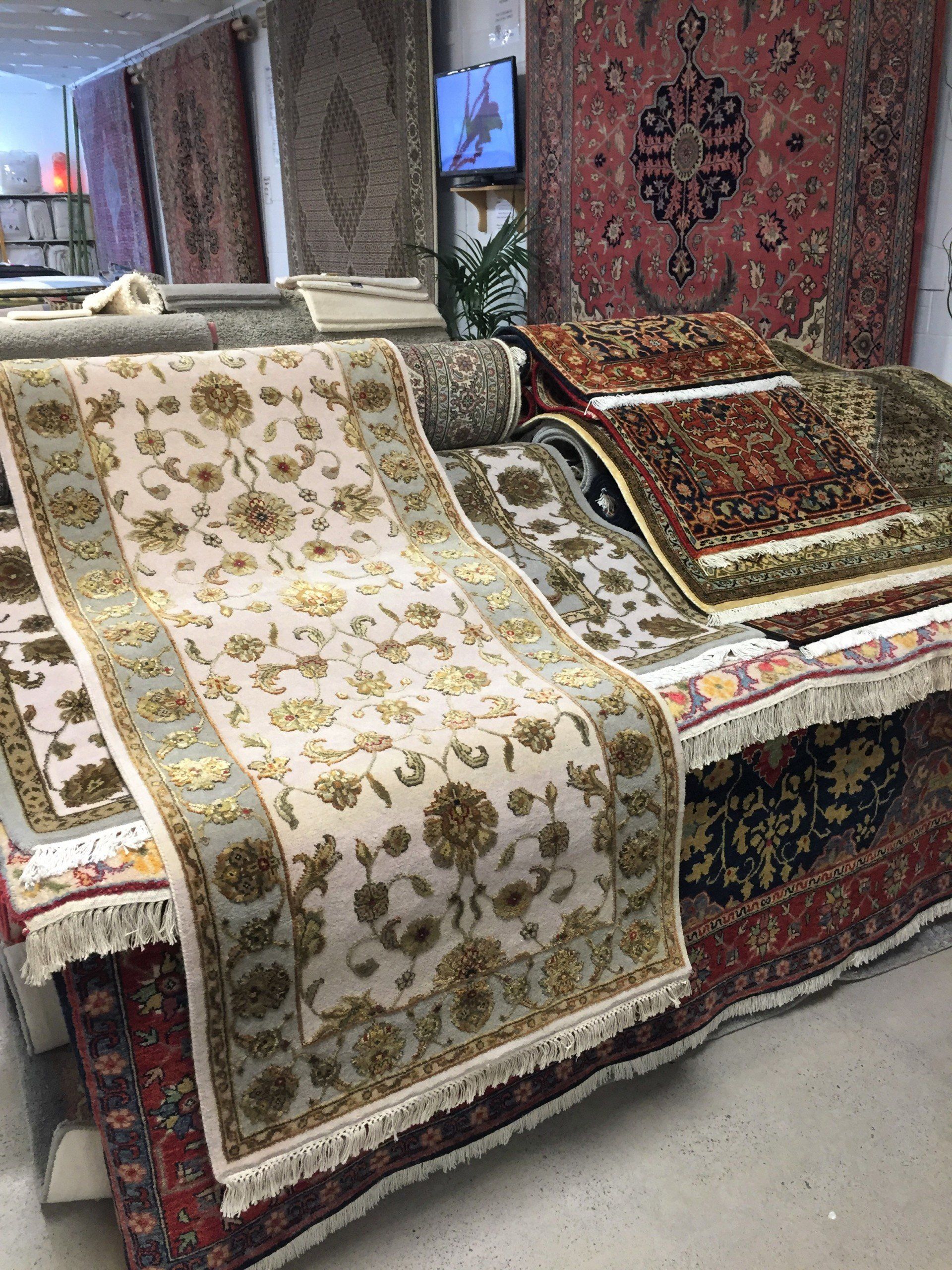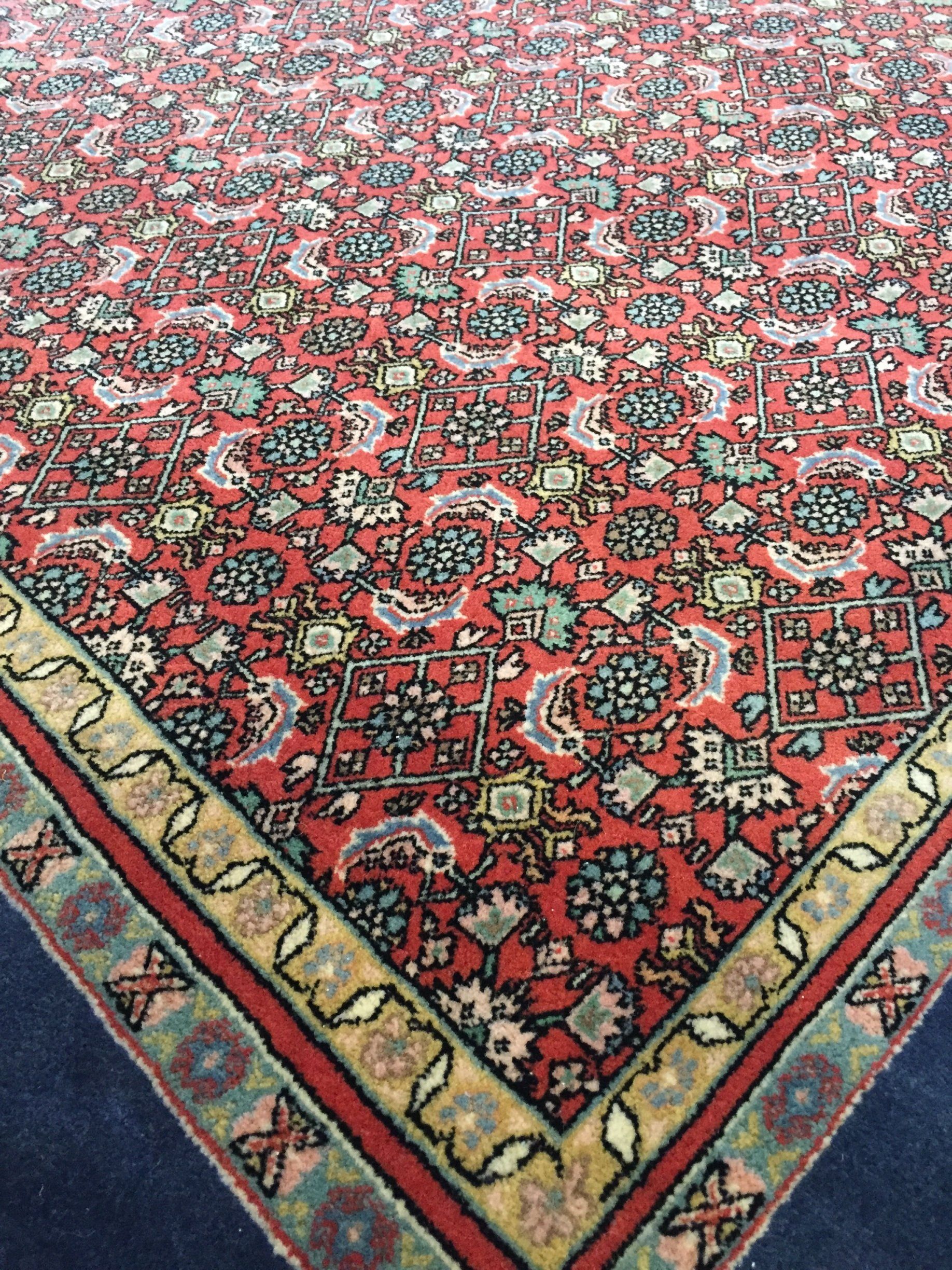Organic Weave hand-made carpets give aware consumers the life-enhancing opportunity to once again feel good about the carpets they are walking and living on. So many claims can be made about the purity and sustainability of carpet, without any requirement to back them up. Consumers are understandably confused about the relative merits of a wide range of options. Closer examination often reveals that they contain harmful glues and other man-made or so-called "natural" materials that can never be certified "organic". Organic Weave of India have pioneered the world's first range of carpets that are fully certified by Global Organic Textile Standard (GOTS) and OneCert. They are hand-made for healthy living with chemical-free cotton, wool and silk. These dyes are extracted from herbs, fruits and spices, just as they were centuries ago. Organic certification is the consumer's only real guarantee of purity as each step of the way is audited, from the farming of materials until the finished product, so that each carpet can be certified organic. Wool; cotton and silk are the fibres that are being grown and processed organically so they are safe for the consumer to use with confidence. These are the fibres to look for when selecting your rug or carpet, in the interests of your family's well-being. Organic Weave offers you the opportunity to enjoy affordable organic carpets, made by skilled artisans with generations of experience. To make this possible, Organic Weave have joined hands with Unnayan - a self help woman's group who weave rugs near the banks of the holy river Ganges in Varanasi, India. Their craftsmen and craftswoman make every technique of hand-made carpet, allowing you the flexibility of choosing the right texture, pattern, colours, shape or size to meet your demands for both home, and commercial applications. All Organic Weave products come with GoodWeave certification that accountability is respected at each process, and no child labour is involved at any stage of the production. Vegetal Dyes Carpets have been dyed with vegetal pigments for thousands of years.
HANDKNOTTED
Hand-Knotted. In hand-knotted rugs, each pile is tied and knotted individually by the craftsman using warp and weft construction on a warp. No additional backing is needed because each pile has already been secured by the knot. Hand-knotting requires the most labor. Master weavers tie individual knots to the warp yarns. These make up the length of a rug. Together, these knots form the actual surface, or pile, of the rug. Inevitably, the more knots there are, the more durable and valuable the rug. Another interesting aspect is that every hand-knotted rug is different. So, you are always getting something unique.
Shag carpets or shag rugs derive their name from their "shaggy" appearance, the fabric appears shaggy. Shag rugs have recently gained popularity for lending a very soft feel and give every room a cozy touch. The distinguishing feature about shag carpets are the long yarn fibres attached to the back of the carpet, giving it an irregular pattern, which gives a naturally messy look. It gives it a "lived in" sort of look to a home. Shag pile rugs are hand-tufted or hand-knotted. Some shag rugs have an additional process called felting. Heat and pressure are applied to the larger tufts for a more compact bind. Felting will slightly reduce shedding in wool, but shedding will still continue over the life of the rug.
HANDTUFTED
Hand-tufted. To create a hand-tufted rug, the pattern is drawn onto a base cloth. One continuous piece of yarn in the desired colour is then punched through the base cloth with a special tool that creates loops on the reverse side. The loops are then trimmed to create a smooth, cut-pile surface. The back of the rug is then coated with latex and fabric (usually cotton) to form the backing and lock the tufts into place. The loops can either be left or cut to make tufts—or create a pattern using both. These rugs then will go through many washings to bring out the lustre and softness of the pile.
Tufted rugs are created without knots so they are easier to manufacture. Even the highest-quality tufted rugs can be produced fairly quickly and inexpensively because less work is involved. Tufted rugs are inclined to shed more than other rugs and may require vacuuming more frequently, especially in the early stages.
FLATWEAVE
Flat-weave rugs and carpets are created on a loom by interlocking warp (vertical) and weft (horizontal) threads to create a flat, thin rug. They have been "flatwoven" for over 5,000 years, beginning with cotton in Southern India and then with wool, silk etc.
They offer a less formal but very versatile floor covering. They are relatively affordable and come in a variety of colours. They can even be tie-dyed.
They are easy to maintain and are ideal for allergy sufferers as they collect less dust. Wiping away a spill is much easier with a flat-weave rug. Though not as soft other rug types, a flat-weave is often used in nurseries and playrooms because toys and furniture can slide easily across.
Hand-loomed rugs offer a variety of rug types, which may or may not have a backing depending on the desired look. Loomed rugs require much less time to produce than a hand-knotted or hand-tufted rug, and therefore will be less expensive. The Organic Weave organic broadloom carpet is hand-loomed.
SUSTAINABLE FUTURE
The feeling of certified organic carpet underfoot will reconnect you with nature in your own home or place of business.
DELIVERY
We offer reliable delivery service to anywhere you are.
GAURANTEE
Anything you purchase comes with
a satisfaction guarantee.


